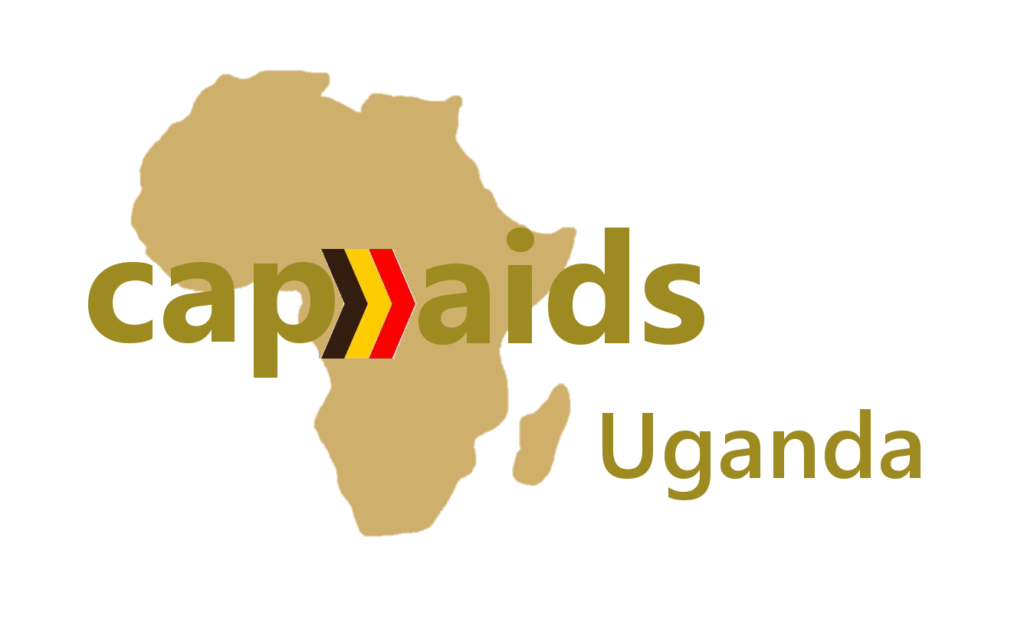Project reach
Consultations covered 7 sub-regions and over 50 districts, engaging 128 NGOs, 87 CBOs and multiple networks, faith-based and private sector actors.

Position paper (CAPAIDS Uganda)
CAPAIDS Uganda’s Local Leadership Lab (LLL) project (May 2025) amplifies the voices of local and national actors across seven sub-regions to explore the status of Locally Led Development (LLD) in Uganda. This interactive page summarizes the position paper, includes key findings, regional insights and concrete recommendations aimed at donors, INGOs, intermediaries and local actors.
Consultations covered 7 sub-regions and over 50 districts, engaging 128 NGOs, 87 CBOs and multiple networks, faith-based and private sector actors.
Quality funding & equitable partnerships; capacity enhancement; and documentation & investment in local philanthropy.
Collaboration and genuine power sharing between international and local actors is essential. For locally led development to thrive, support needs to be flexible, long-term, and built on real partnerships where local actors are valued as equal leaders, not just implementers.
LLD centers on empowering local stakeholders — communities, civil society, local governments and private sector — to set priorities, devise solutions and mobilize resources for sustainable outcomes. Donors increasingly acknowledge the need to embed impact in local systems, but practice often falls short of transferring decision-making authority.
The Local Leadership Lab follows a three-stage process: Discovery (demand articulation & stakeholder mapping); Ideation (co-design, trust-building); and Action (implementation, iteration and learning). The focus is locally-owned, locally-led and context-specific.
The paper used qualitative methods: literature review plus extensive regional consultations. Stakeholders included CSOs, CBOs, national and district NGOs, PWD-led groups, women-led and youth-led organizations, local government officers, religious and cultural institutions and the media.
Uganda promotes locally led development through its National Local Economic Development (LED) policy and the Parish Development Model (PDM). LED aims to deepen fiscal decentralisation and enable local public-private-community partnerships for economic growth. Implementation inconsistencies remain a challenge.
Since the Aid Effectiveness Agenda and commitments like the Grand Bargain (2016), the sector has pushed for localization — including more direct funding to local and national actors and multi-year, unearmarked resources. However, structural power imbalances and donor practices still slow progress.
Locally designed solutions are culturally relevant, resilient, and more likely to be sustained after external funding ends. LLD increases local accountability, builds local capacity, and shifts power so communities can shape the futures they want.
“The Status of Locally Led Development in Uganda” (CAPAIDS Uganda).
Worst performing: Northern & Karamoja show very low internal cost recovery.
According to the paper, quality funding must be: flexible, multi-year, direct, predictable and include overhead & internal cost recovery.
Funding should be accessible to grassroots actors without onerous compliance gates that exclude smaller local organizations.
Build equitable partnerships based on trust and mentorship — donors should treat local actors as co-creators, not subcontractors.
Multi-year (the "vaccine approach") funding provides sustainability — short-term "paracetamol" funding undermines local capacities.
Below are concise region-by-region summaries pulled from the consultations.
Participants: 21 actors (mix of NGOs, CBOs, media, FBOs). Funding: 46% annual, 29% activity-based, 23% multi-year, 1% in-kind. ICR: 73% of projects provided no internal cost recovery; only a few donors provided operational costs up to 50% in some cases.
Primary asks: multi-year funding, capacity building, stronger local-entry for donors and donor working group with local actor representation.
Context: Post-conflict recovery. 6 of 30 organizations (20%) receive activity-based funding, 1 (3%) receives annual funding; none receive multi-year funding. Many organizations operate on volunteer support.
Asks: direct funding, investment in local resource mobilization and social enterprises, improved overhead percentages, co-creation in design.
Funding: 58% activity-based, 27% annual, 15% multi-year. ICR: 54% received none; 33% <15%; 13% <30%. District actors requested better involvement in planning and regulatory compliance support.
Mixed donor ranking. 30% multi-year, 35% annual, 60% activity-based (note overlaps due to multiple project types). Overhead: nearly 45% get 1–10% operational costs; ~29% receive none.
Donor approaches vary — many donors lack needs assessment at community level, resulting in mismatched projects. Asks include multiyear funding and pooling funds for trusted local organizations.
Refugee-hosting region with rising humanitarian demand. Funding short-term; local organizations need flexible funding and capacity for refugee response.
Mixed observations; some positive donor engagement but still gaps in overhead and ICR for local institutions. Call to increase visibility and strengthen district coordination.
Marginalized groups reported barriers to funding access, lack of respect and recognition, and culturally insensitive approaches. Donor asks include safe dialogue spaces, co-design and support for social enterprises that build sustainability.
Often excluded from overhead and ICR considerations; requested better inclusion and tailored compliance processes.
Report lack of respect and limited funding—call for inclusive funding, flexible requirements and targeted capacity support.
Face accessibility and eligibility barriers — donors must remove structural barriers in grant design.
These recommendations were synthesized from regional inputs and aim to increase predictability, flexibility and local ownership across Uganda.
The position paper highlights structural gaps in funding quality and partnership practices, while also showing positive shifts towards localization by some donors and networks. A collective push — donors, INGOs and local actors — is necessary to make LLD the default operating model. The project thanks CIVICUS and all regional participants for their input.
Lead researcher: Ronald Matanda — CAPAIDS Uganda